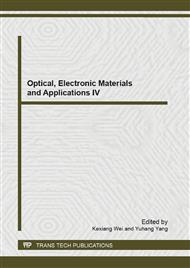p.143
p.147
p.153
p.157
p.161
p.166
p.171
p.176
p.180
Optimization of Photovoltaic Grid-Connected Inverter System
Abstract:
In order to increase the stability of grid connection of photovoltaic plant, effort has been made to study the grid connection principle of photovoltaic plant, mathematical model of grid-connected photovoltaic inverter and power grid distributed parameters, and improve traditional space vector control theory to keep d axis of d-q rotating coordinates consistent with the rotating space vector of network voltage and realize decoupling control over active power and reactive power of grid-connected photovoltaic system, through real-time detection of fluctuations in grid-connected current and network voltage, get voltage current dual-loop to place feedback control, which effectively compensates the modulating signal of inverter, reduces photovoltaic grid-connected output voltage and current harmonics so that the system has better robustness, and improves the reliability of grid connection.
Info:
Periodical:
Pages:
161-165
Citation:
Online since:
July 2013
Authors:
Price:
Сopyright:
© 2013 Trans Tech Publications Ltd. All Rights Reserved
Share:
Citation:


